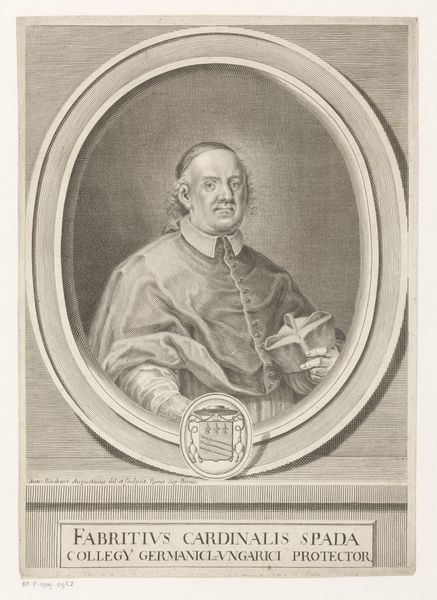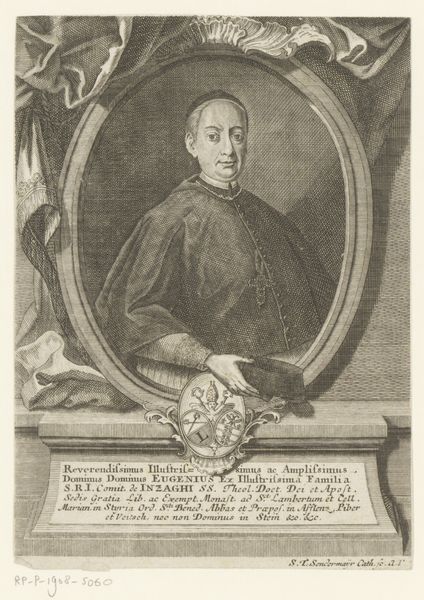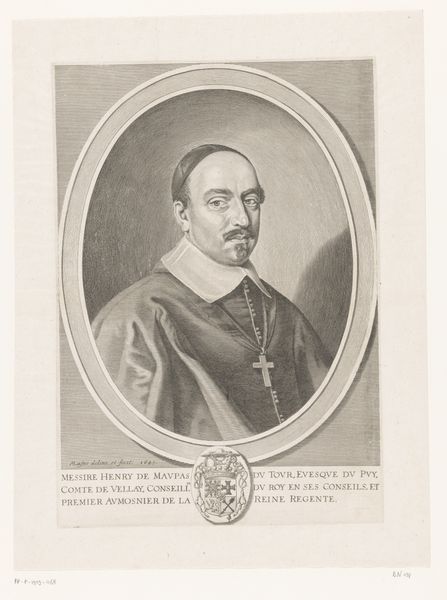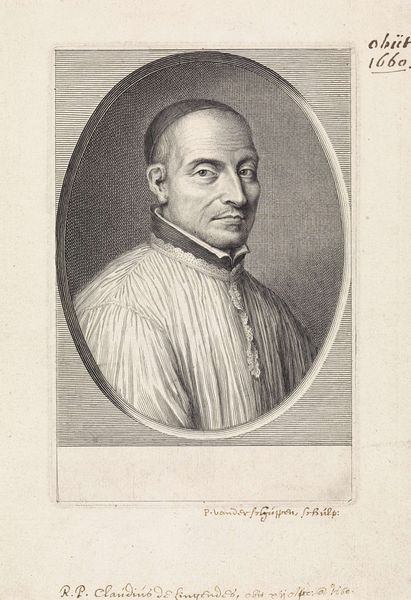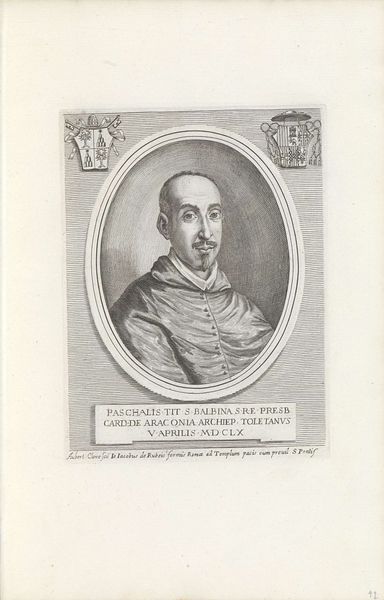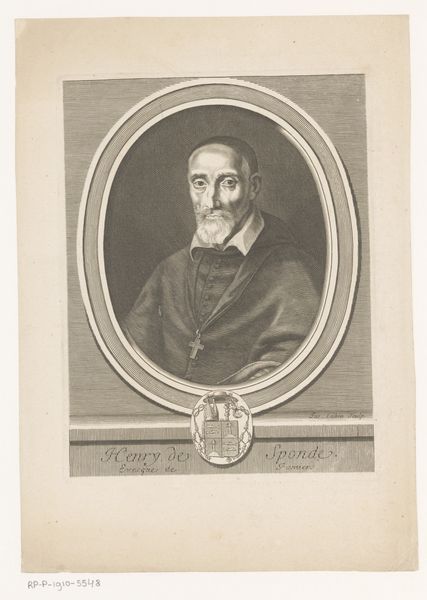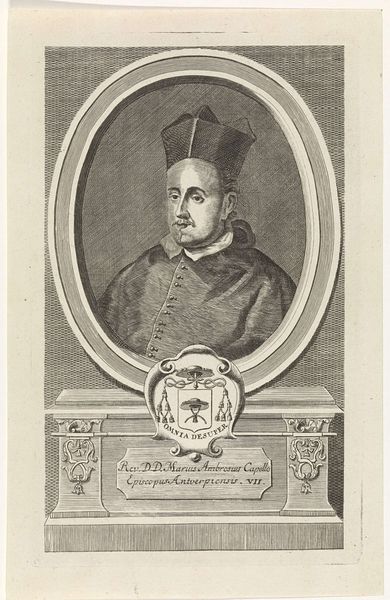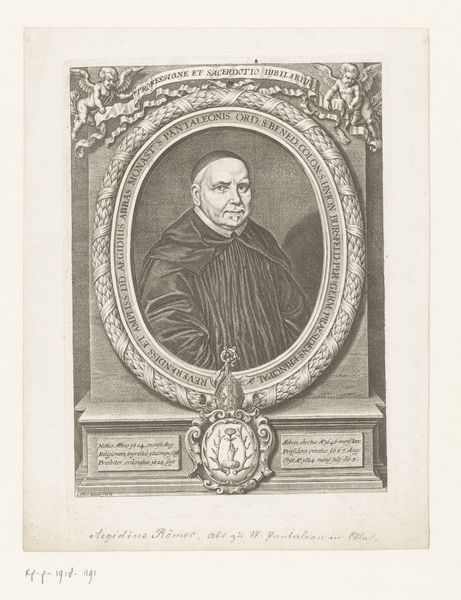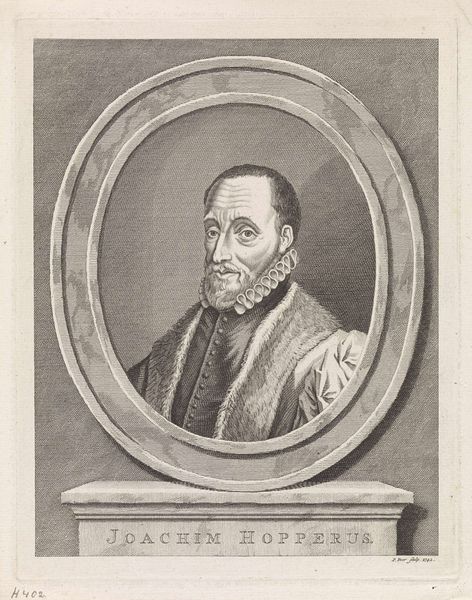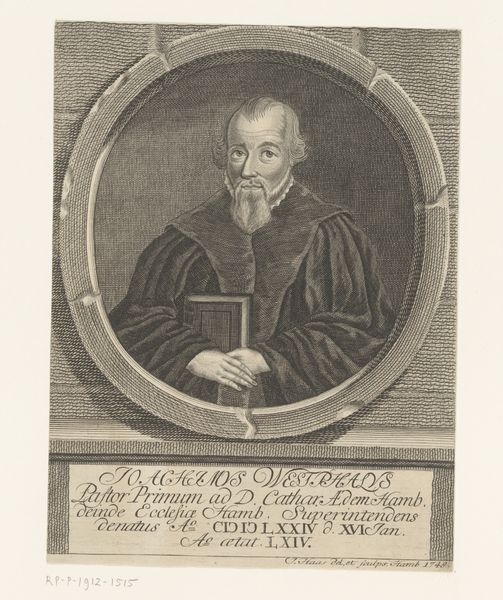
print, intaglio, engraving
#
portrait
#
baroque
# print
#
intaglio
#
engraving
#
monochrome
Dimensions: height 400 mm, width 296 mm
Copyright: Rijks Museum: Open Domain
Alexander Voet the Second created this engraving, "Portret van Hendrik van Halmale," sometime in the late 17th century. As a portrait, the image offers a glimpse into the visual culture of the Dutch Golden Age, particularly how the elite classes wished to be seen and remembered. Portraits of this era often functioned as statements of social standing, and this image is no exception. Van Halmale's attire and the elaborate framing around his image speak to his status and the importance of lineage and position within the hierarchical structures of the time. The Latin inscription and heraldic symbols further emphasize his noble connections and learned background. While the portrait is undoubtedly a celebration of van Halmale's identity and accomplishments, it is also a reflection of the broader societal values of the 17th century, where class and religious identity were carefully constructed and maintained through visual representation. Consider how portraits like this helped to reinforce a particular social order. What was the emotional effect of such images?
Comments
No comments
Be the first to comment and join the conversation on the ultimate creative platform.
